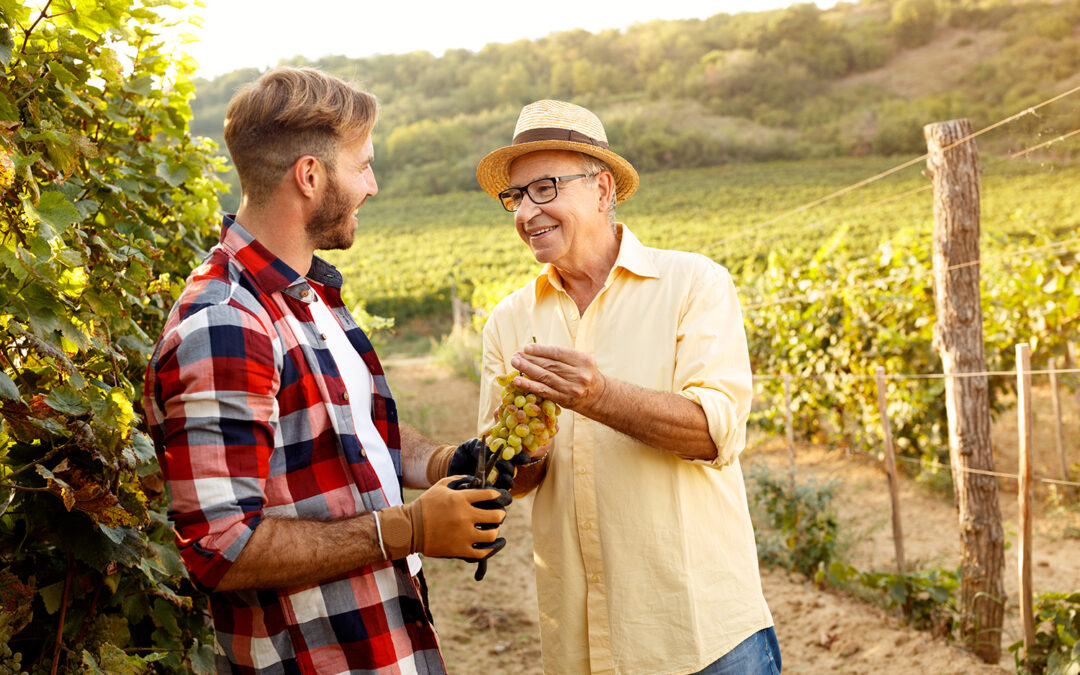When it comes to big tax savings for your vineyard, partnership farming beats going it alone
Most estate winery owners consider the value of their vineyard property to be a cornerstone of their future retirement and estate planning. As we have stressed in previous articles, ensuring your vineyard meets the definition of “qualified farm property” is critical to any future planning – whether you are considering a future sale of your property or a transfer of ownership of the property to your children. Now that the lifetime capital gains exemption for qualified farm property has been increased to $1 million per individual, the tax savings to a couple of ensuring their vineyard meets the definition of qualified farm property could be as high as $477,000 (using top Federal and B.C. combined tax rate for capital gains of 23.85%).
You may think that having your vineyard property meeting the definition of “qualified farm property” would be a slam dunk. But there are several criteria to this definition in the Income Tax Act, and being offside on just one may disqualify the property completely. One key aspect of the definition depends on the question of who is doing the farming. Under certain circumstances, the farming can be done through a corporation, but in this article we will focus on the difference between owners farming as individuals versus farming through a partnership.
A 2014 Tax Court of Canada case, Otteson v. The Queen provides some very useful guidance in determining whether the criteria for the qualified farm property capital gains exemption have been met. Here is a basic summary of the facts in Otteson:
• In 2003, Ronald and Donna Otteson purchased 50.16 acres of land for $100,000 for use as a tree farm. They then started to clear the land and plant trees;
• The Ottesons also earned income from renting a portion of the property to another farmer;
• From 2003 to 2008, the Ottesons’ principal source of income was Mr. Otteson’s pension;
• In 2007, valuable gravel deposits were discovered on the property leading to the sale of the property for $1.6 million;
• The Ottesons claimed the farming capital gains exemption on the entire capital gain of $1.5 million;
• The Canada Revenue Agency (CRA) denied the capital gains exemption on the basis that there was no partnership;
• In the absence of a partnership, Ronald and Donna (as individuals), failed to meet the requirement that, in at least two years while the property was owned, the gross revenue of the individuals from the farming business must exceed their income from all other sources.
By contrast, if the Ottesons could prove that a “family farm partnership” existed, then they would only need to demonstrate that, throughout a period of at least 24 months, they were engaged in farming the property on a regular and continuous basis. If the farming is done through a family farm partnership, then the individual partners do not need to meet the gross revenue test mentioned above.
Most vineyard owners we see have a significant source of off-farm income to support their grape-growing/winemaking “habit”. This makes it quite difficult to establish a two year period where gross revenue from farming exceeded income from all other sources. Clearly, establishing that you are farming as a “family farm partnership” presents a much lower hurdle to overcome.
Returning to the Otteson case, Justice Robert J. Hogan found that in reviewing the facts, a partnership did exist. This was despite the fact that the Ottesons themselves were not directly trying to prove a partnership existed. A partnership is not a defined entity under income tax law. Rather, partnerships are governed in Canada by provincial legislation that sets out a definition of a partnership. This definition is very similar from province to province and usually points to a relationship that exists between persons carrying on business in common with a view to a profit.
In the Otteson case, there was no written partnership agreement. However, formal documentation is always extremely helpful in dealing with CRA. A partnership agreement should specifically indicate that the business of partnership is the business of farming in Canada, to the exclusion of any other non-farming activities. But a written agreement itself is not enough – your actions must be consistent with your stated intentions. In his judgement, Hogan noted:
“The existence of a partnership is fact-specific. The criteria applied to determine the existence of a partnership include the contribution by the parties of money, property, effort, knowledge, skills and other assets to a common undertaking, the sharing of profits and losses, a mutual right of control or management of the enterprise, the filing of income tax returns as a partnership and joint bank accounts”
Once you have established partnership and regular and continuous engagement in the farm business, you must also pass a secondary test. In order for a partnership to be considered a “family farm partnership”, throughout any 24 month period, more than 50% of the fair market value of the property of the partnership must be property that was used principally in the course of carrying on the business of farming in Canada. In addition, at the time of a deemed or actual disposal of the farm property, all or substantially all (90% or more) of the fair market value of the property of the partnership must be property that was used principally in the course of carrying on the business of farming in Canada.
Consider a situation where a partnership farms the vineyard, but also makes wine from the grapes. Such a partnership would likely not be considered a family farm partnership because it would own significant property used in the wine business. And as mentioned in previous articles, CRA does not consider wine making a farming business. The result – your vineyard may not qualify for the farming capital gains exemption.
In addition, you want to demonstrate that while you farm the property as a partnership, the land is owned by you as individuals and not by the partnership. Why? If the property is used for other things besides farming (residential use, rental, commercial winemaking), it will be difficult for the partnership to own the property directly and meet the “all of substantially all” farm use test.
This brings us to a final takeaway from the Otteson case, which is of particular relevance to owners of mixed use properties like estate wineries. Again, consider a typical situation where an owner’s vineyard, winery and principal residence is situated on a property with a single title. When determining whether such a property is used principally in the business of farming, does one consider the entire property? Or can the property be broken up and considered separately according to its use? Considering a mixed use property as a whole creates challenges in meeting the principal use test and a typical estate winery property would not likely qualify. Luckily, in his judgement, Justice Hogan clarified this issue:
“In my opinion, nothing is the provision bars consideration of a section or part of a larger piece of land, otherwise land that has been legally subdivided would be preferred to land that has not been. This would mean that farmers would be inclined to seek subdivision of land where a portion representing quantitatively and qualitatively more than 50% of the total area was used for a non-farm purpose.”
In other words, we can “carve up” a property under a single title for taxation purposes, treating the vineyard, principal residence and non-farm winery land and buildings as separate properties when considering their principal use. This is good news for estate winery owners.
If you have made it this far, then I probably don’t need to remind you that the question of whether or not your property (or a part of it) will be eligible for the farmer’s capital gain exemption is one that is best resolved in consultation with a knowledgeable tax professional. But the tax rules definitely create a clearer path for proper structured farm partnerships than they do for individual farmers!
SOURCE: Geoff McIntyre, accountant – MNP

